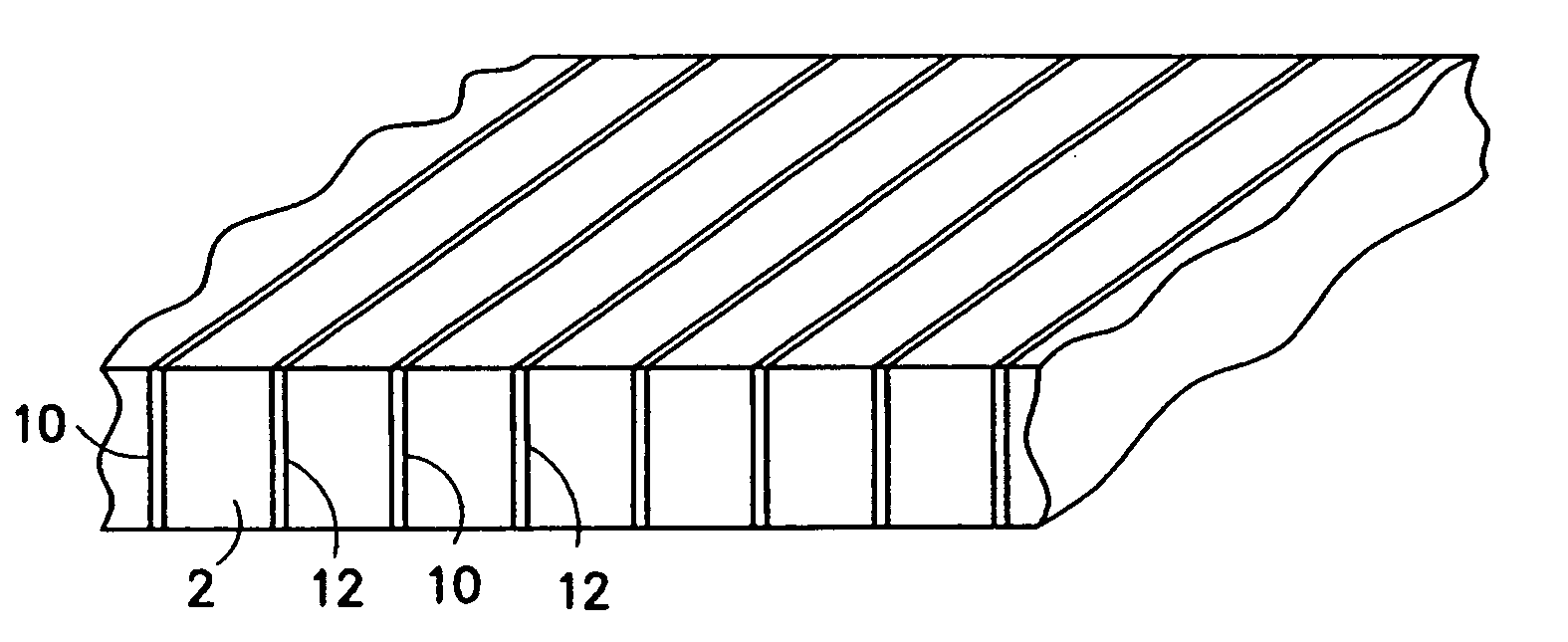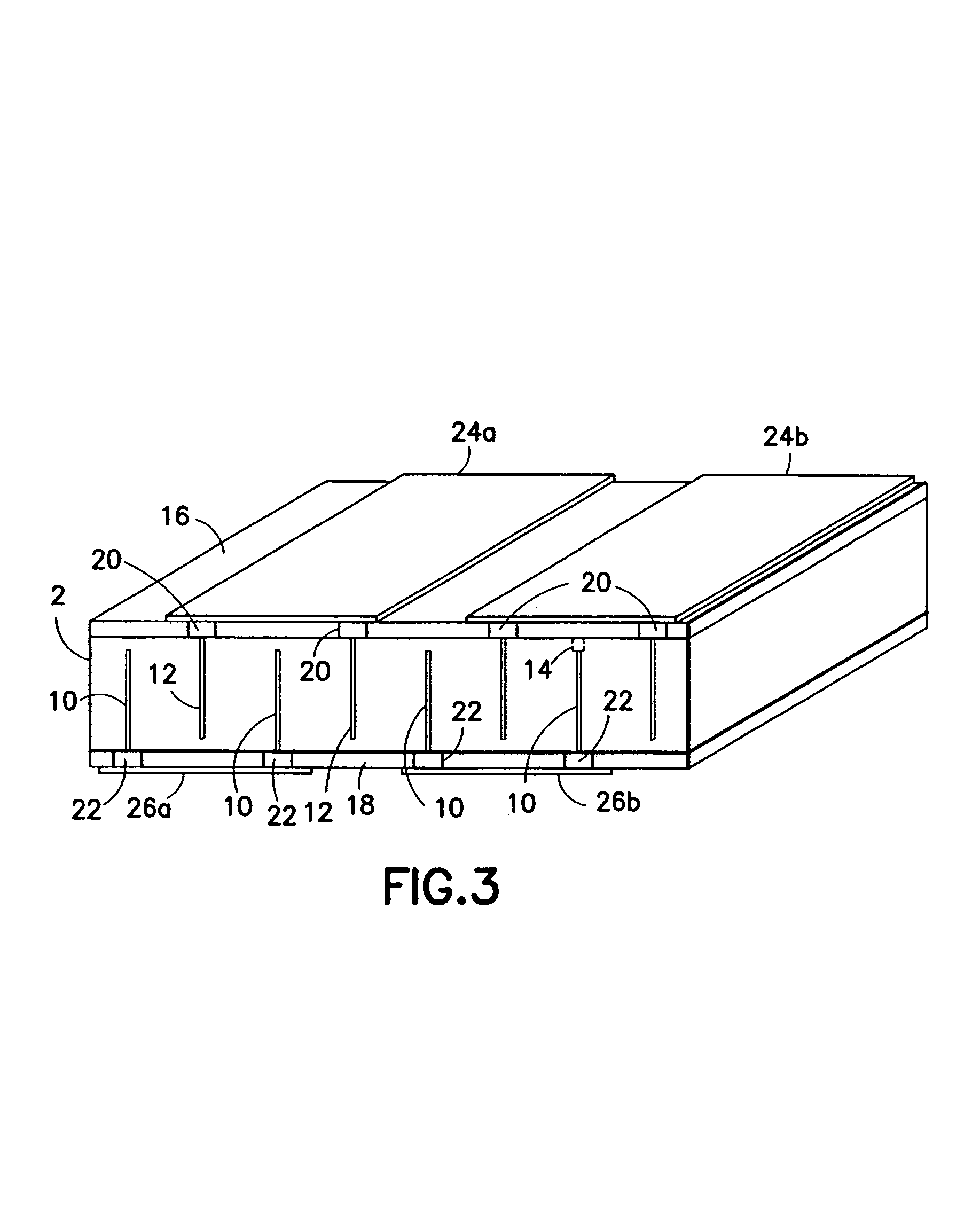Method for making multi-layer ceramic acoustic transducer
a multi-layer ceramic and transducer technology, applied in piezoelectric/electrostrictive transducers, transducer types, generators/motors, etc., can solve the problems of reducing electrical efficiency, affecting the sensitivity of elements, and the inability to optimize parameters to match the electrical impedance of cables
- Summary
- Abstract
- Description
- Claims
- Application Information
AI Technical Summary
Benefits of technology
Problems solved by technology
Method used
Image
Examples
Embodiment Construction
[0020]The method disclosed herein involves preparing a multi-layer acoustic stack based on laminating individual piezoelectric layers that possess metal electrodes on both faces, followed by connecting these electrodes in a manner that yields an interdigitated electrode connection. These methods are useful for preparing elements in both a linear acoustic array and also small elements for a two-dimensional acoustic array. Such acoustic arrays are useful for medical imaging applications.
[0021]The method disclosed herein for forming multi-layer piezoelectric acoustic transducers does not entail weakening the structural integrity of the piezoelectric element by removal of a portion of the ceramic element. Furthermore, the method is capable of preparing multi-layer stacks possessing several layers without added complexity. The method is based on laminating together discrete bars of metallized piezoelectric ceramic in such a manner as to form a laminated ceramic plate possessing internal ...
PUM
| Property | Measurement | Unit |
|---|---|---|
| electrical impedance | aaaaa | aaaaa |
| electrical impedance | aaaaa | aaaaa |
| impedance | aaaaa | aaaaa |
Abstract
Description
Claims
Application Information
 Login to View More
Login to View More - R&D
- Intellectual Property
- Life Sciences
- Materials
- Tech Scout
- Unparalleled Data Quality
- Higher Quality Content
- 60% Fewer Hallucinations
Browse by: Latest US Patents, China's latest patents, Technical Efficacy Thesaurus, Application Domain, Technology Topic, Popular Technical Reports.
© 2025 PatSnap. All rights reserved.Legal|Privacy policy|Modern Slavery Act Transparency Statement|Sitemap|About US| Contact US: help@patsnap.com



